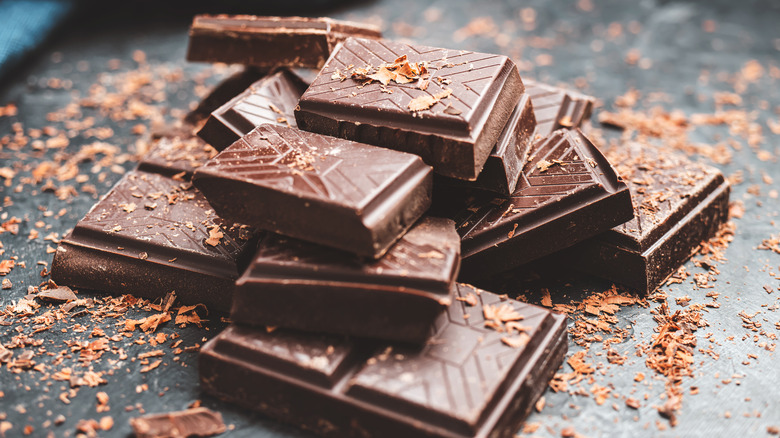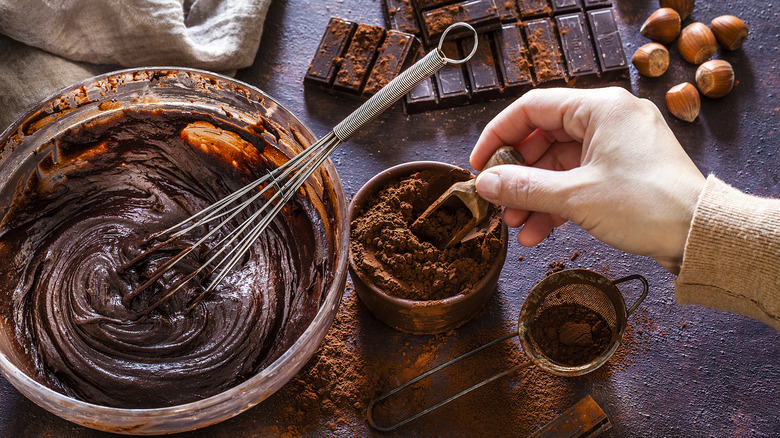What Is The Difference Between Bittersweet And Semisweet Chocolate?
In chocolate, what does bittersweet versus semisweet mean? Why do some bittersweet bars have less cacao content than some semisweet ones? Typically, semisweet chocolate has lower cacao content and is sweeter than bittersweet chocolate. However, there are no official guidelines about what can be called bittersweet and what can be called semisweet, and they both fall under the umbrella of dark chocolate. The only FDA requirement is that anything labeled bittersweet or semisweet chocolate contains at least 35% cacao and less than 12% milk solids. If a higher percentage of milk solids is present, then the final product must be labeled milk chocolate. Beyond that, labeling is entirely up to the manufacturer.
At its most basic, chocolate is made from cocoa mass (cocoa liquor) and cocoa butter. Other ingredients, such as milk powder and sugar, determine the type of chocolate created. Flavorings and stabilizing chemicals can also be added to the mix. As the cacao percentage increases, sugar content decreases, but this does not necessarily mean more bitterness. Some regions and processing methods produce cocoa beans that are more bitter than others — even if used at the same concentration.
When you get into the finer points of cocoa percentage, things get even more confusing — but at least they remain reliably delicious.
When to use semisweet and bittersweet chocolate
As bittersweet and semisweet chocolate can refer to the same or similar products, it may be easiest to think in terms of milk and dark chocolate when baking. When you want a sweeter, milder chocolate flavor, go for milk, and when you want something more intense, use either semisweet or bittersweet. The best way to know the specific flavor profile you want for any given application is to get familiar with a range of chocolate brands beforehand. Yes, you get to eat a bunch of chocolate and call it research! Take note of different brands' nuances and intensities and pick whichever seems best suited for the specific dish you plan to make.
One other note: While those bright yellow bags of semisweet chocolate chips are classic cookie ingredients, it's generally preferable to use chopped chocolate bars for batters and doughs or chocolate wafers for anything that calls for melted chocolate. This will result in a superior flavor and texture in your finished product. Ultimately, the fewer stabilizers and additives in the mix, the better. Beyond that, it's all a matter of personal taste.

